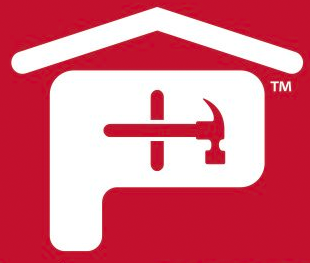Gloeocapsa magma (glo-e-oh kap-sa mayg-ma) is the scientific term for a specific type of algae. Dark streaks, stains, and discoloration that appear on a roof are the accumulation of dead cells of gloeocapsa magma, commonly referred to as roof algae. That is because, although it can appear on many surfaces, this strain of parasite primarily attaches itself to roof shingles.
At present only one major manufacturer, Atlas Roofing, produces an algae resistant line of asphalt shingles. Marketed under the name Pinnacle® Pristine these shingles contain Scotchgard™ Protector and they are guaranteed to resist algae and retain the shingle’s color for 20 years. Roofing shingles with Scotchgard™ Protector contain copper granules that are an effective poison to gloeocapsa magma. Over time, as the copper is slowly released, the granules on each shingle kill the algae before it can take hold.
An infestation of gloeocapsa magma begins where a roof gets the least amount of sunlight; usually the north side and areas that stay damp the longest. With slow, stealthy movement it grows, darkening the roof until it totally covers over every square foot. If it isn’t stopped, the infestation of algae will cause severe damage and shorten a roof’s useful life. In addition it will lead to increased energy costs and reduce a house’s market value through loss of curb appeal.
Gloeocapsa magma feed on the limestone filler that gives an asphalt shingle its weight. Unprotected surface granules that cover shingles begin to loosen and wash off with rainfall. This condition then reduces a roof’s ability to reflect sunlight, which results in overheating of the roof. Gloeocapsa magma will not just detract from a home’s aesthetic appeal, but could actually lead to total roof failure.
This parasite spreads quickly as airborne algae spores are carried and deposited from roof to roof by the wind and wildlife. Algae growth is not only a threat to your roof, but its existence on your house leaves your neighbors at risk too. One house riddled with gloeocapsa magma will gradually infest an entire neighborhood. Some insurance companies, and many homeowner associations, are now requiring infested homes to perform chemical cleaning (which actually presents more hazards) or even full roof replacements.
The presence of this form of algae on roof shingles also enables the biological growth of other damaging organisms, such as mold, moss, and lichens, the fungal portion of an algae colony. These organisms anchor into the top layer of shingles and contribute to a further loss of granules. They grow into the slots of the shingles and along the edge, causing them to lift, making a roof deck more susceptible to wind damage and leaks. Acting like moisture sponges, this growth keeps the roof from drying. In a vicious cycle, this perpetual dampness causes even more algae to grow.
Roofing contractors advise homeowners not to attempt cleaning algae from a roof with a pressure washer. Under no condition should any pressure greater than that from a standard garden hose be used on a roof. Pressure washing would be an exercise in futility because high pressure cleaning will not kill gloeocapsa magma. However its force will dislodge granules, further weakening and scarring the shingles, reducing the life expectancy of a roof and possibly even voiding its warranty.
Chemical roof cleaning is an extremely delicate process. Industrial-strength cleaners must be gently applied with a sponge or a hand-held sprayer, and then rinsed off thoroughly. However, this type of cleaning is only a temporary fix. The process has to be applied at least once, and possibly twice, every year to prevent colonies of gloeocapsa magma from rejuvenating.
Some homeowners have tried to clean gloeocapsa magma from their roofs using chlorine bleach. However, the effect is just temporary and chlorine, a listed hazardous chemical, must be handled with extreme care. Surrounding areas have to be completely covered as chlorine can kill grass, shrubs, flowers, and other greenery. Chlorine overspill can also void a home's termite warranty due to its interaction with protective chemicals in the ground that would render any termite protection ineffective.
Roof mold could be taking over your roof as you read this article. Learn more about at atlasroofing.com how Atlas Pinnacle® Pristine asphalt shingles with Scotchgard™ Protector can save your roof from the damaging epidemic of gloeocapsa magma.



 Gear!
Gear! PRO LOGIN
PRO LOGIN